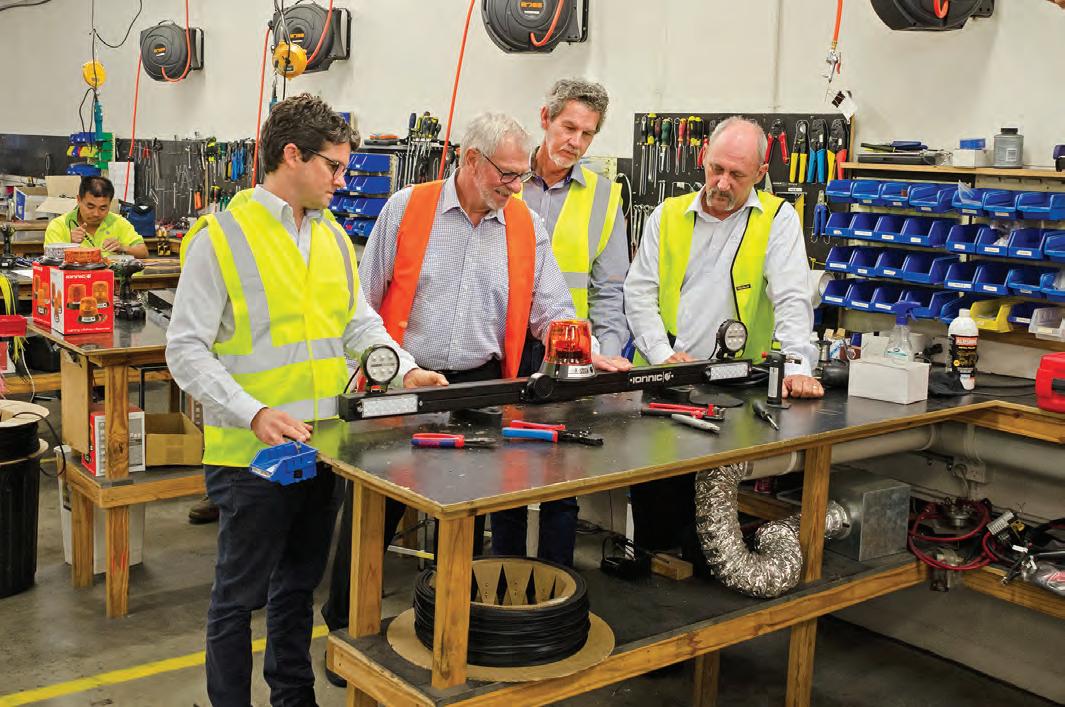Patten Pavement Service’s Kleemann crusher has crushed to the bottom of a client’s site for the first time in 15 years.
KLEEMANN...
THAT’S A RAP RENOWNED GERMAN MACHINERY MANUFACTURER KLEEMANN HAS BEEN PRODUCING CRUSHERS AND SCREENS FOR MINERAL PROCESSING SINCE THE 1920S. NOW, WIRTGEN IS BRINGING THE LATEST TECHNOLOGY FROM THE OEM TO AUSTRALIA.
T
he finite nature of quarry materials has caused Reclaimed Asphalt Pavement (RAP) and recycled concrete to become increasingly crucial for the construction sector. Recycling asphalt being incorporated into new road construction is not new. It’s now the normal and saves highly valued material being treated as waste. During this process it is important to consider how an aged asphalt pavement can be recycled effectively ensuring the result is economically justifiable. Kleemann GmbH is a member company of the worldwide Wirtgen Group and a business built on its expertise in crushing and screening. The Kleemann MOBIREX MR130 Z EVO2 mobile impact crusher is used across many material processing applications from crushing and demolition waste, concrete through to asphalt. The Kleemann MR130 aims to excel at the economical processing of recovered asphalt for recycling. INCREASED CAPACITY Patten Pavement Services is a Victorian road profiling business that crushes and produces construction materials. Tony Ferguson, Operations Manager at Patten Pavement Services, says the business used other impactors in the past but with 24
ROADS SEPTEMBER 2020
our Wirtgen profilers it made sense to transition over to the Kleemann. The other deciding factor was the strong after sales service that we provide PPS on the profilers, they knew that they were going to expect the same service when it come to the Kleemann product. “We purchased the MR130 Z around a year ago and what we have found is that it has changed the business model for us in terms of crushing,” he says. Ferguson explains that as the machine is diesel electric driven, as opposed to diesel hydraulic, the fuel savings per tonne are a significant benefit. “In any given year we could go through anywhere from $20,000 to $30,000 of hydraulic related expenses. We have found it’s also cut our fuel expenses, from the impactor, to almost half of what we were originally using,” he says. “We have even gone to a bigger machine and we have a much better fuel economy for it with the electric drive.” The design of the Kleemann is another factor that impressed Ferguson, he says in the past some machines struggled to remove contaminants with their returns systems. However, the recirculating conveyor has been successful in clearing out contaminants that keep going around and around thus eliminating the need for a
picker to manually remove the un-crushable material from the circuit. “The operator can control the recirculating belt via a wireless remote control and stockpile it off to the side of the machine, which allows you to remove these contaminants from the crushing circuit. Then you simply bring the belt back in and you can start again, without stopping the entire machine and all of this can be done on the fly,” Ferguson says. The new material flow concept on the Kleemann MR130 Z, aims to ensure that there is no restriction to the flow of the material, prevents blockages, reduces wear and increases the performance of the entire plant Some of the new elements of the Kleemann design include the independent double-deck pre-screen, a vibrating discharge chute or pan feeder under the crushing chamber as well as a new crusher with inlet geometry and rotor ledges technology. Kleemann MOBIREX plants aim to crush stone so efficiently that the grain shape, grain size distribution and cleanness comply with strict standards for concrete and asphalt aggregates. Ferguson says for one of his clients it wasn’t just the quality of the material produced that was so impressive. “What they found to be the big difference was tonnes on the ground, and the reliability

















